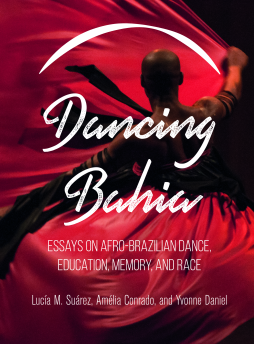
Additional Information
Book Details
Abstract
Dancing Bahia is an edited collection that draws together the work of leading scholars, artists, and dance activists from Brazil, Canada, and the United States to examine the particular ways in which dance has responded to socio-political notions of race and community, resisting stereotypes, and redefining African Diaspora and Afro-Brazilian traditions. Using the Brazilian city of Salvador da Bahia as its focal point, this volume brings to the fore questions of citizenship, human rights, and community building. The essays within are informed by both theory and practice, as well as black activism that inspires and grounds the research, teaching, and creative output of dance professionals from, or deeply connected to, Bahia. Table of Contents List of Illustrations Foreword Acknowledgments Introduction Part I: Bahian Dance in Action Chapter 1: Afro-Brazilian Dance as Black Activism Amélia Conrado Chapter 2: Dance Artistry and Bahian Forms of Citizenship: Isaura Oliveira and Malinké Yvonne Daniel Part II: Memory, Resistance, and Survival through Dance Education Chapter 3: Pedagogies of the Body within African Matrix Education of Salvador, Brazil: Perspectives and Challenges of an Emancipatory Project Pilar Echeverry Zambrano Chapter 4: African Matrix Dance: Repertoire Options for Approaching Race and Ethnic Relations in Brazilian Schools Piedade Lino Videira Chapter 5: After-School Samba: Cultural Memory and Ownership in the Wake of UNESCO Recognition as Intangible Heritage of Humanity Danielle Robinson and Jeff Packman Part III: Reflections: Paths of Courage and Connections Chapter 6: Why Not Me? Reflections on Afro-Dance and Law No. 10.639 Nadir Nóbrega Oliveira Chapter 7: Dancing into the Politics of Race: From Bahia to Kingston Deborah A. Thomas Part IV: Defying Erasure through Dance Chapter 8: Negotiations: Afro-Bahian Memory, Storytelling, and Dance Lucía M. Suárez Notes on Contributors Index
Table of Contents
| Section Title | Page | Action | Price |
|---|---|---|---|
| Cover | Cover | ||
| Half Title | i | ||
| Title | iii | ||
| Copyright | iv | ||
| Contents | v | ||
| List of Illustrations | vii | ||
| Foreword | ix | ||
| Acknowledgments | xiii | ||
| Introduction | 1 | ||
| Part I: Bahian Dance in Action | 15 | ||
| Chapter 1: Afro-Brazilian Dance as Black Activism | 17 | ||
| Chapter 2: Dance Artistry and Bahian Forms of Citizenship: Isaura Oliveira and Malinké | 39 | ||
| Part II: Memory, Resistance, and Survival through Dance Education | 71 | ||
| Chapter 3: Pedagogies of the Body within African Matrix Education of Salvador, Brazil: Perspectives and Challenges of an Emancipatory Project | 73 | ||
| Chapter 4: African Matrix Dance: Repertoire Options for Approaching Race and Ethnic Relations in Brazilian Schools | 95 | ||
| Chapter 5: After-School Samba: Cultural Memory and Ownership in the Wake of UNESCO Recognition as Intangible Heritage of Humanity | 117 | ||
| Part III: Reflections: Paths of Courage and Connections | 137 | ||
| Chapter 6: Why Not Me? Reflections on Afro-Dance and Law No. 10.639 | 139 | ||
| Chapter 7: Dancing into the Politics of Race: From Bahia to Kingston | 153 | ||
| Part IV: Defying Erasure through Dance | 167 | ||
| Chapter 8: Negotiations: Afro-Bahian Memory, Storytelling, and Dance | 169 | ||
| Notes on Contributors | 215 | ||
| Index | 219 | ||
| Back Cover | Back Cover |
